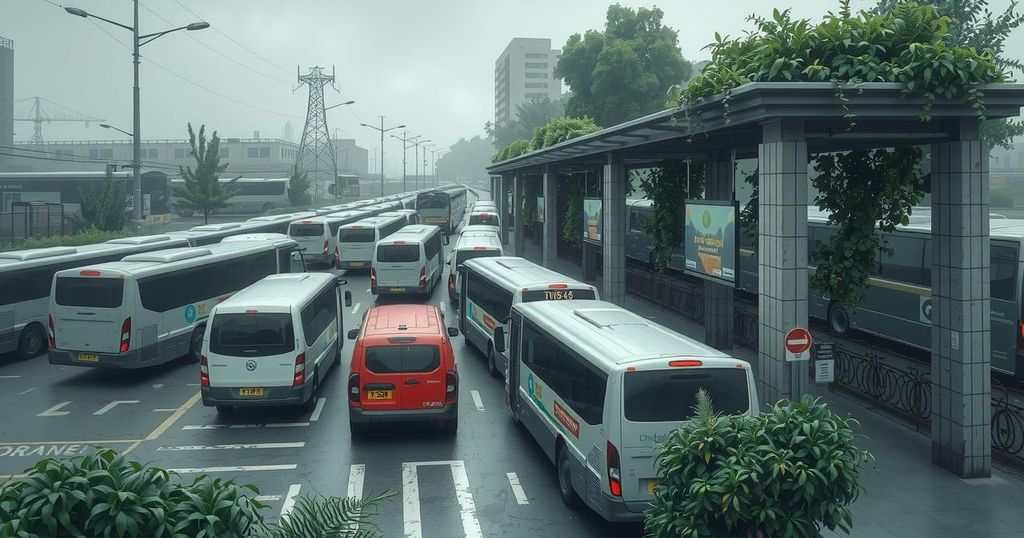A recent study highlights that climate change worsens waiting conditions for public transit, leading to decreased ridership across major U.S. networks. Extreme weather events, such as heat and rain, severely impact transit operations and threaten the safety of reliant populations. Experts advocate for significant improvements to transit infrastructure to combat these issues and promote the use of public transportation.
A recent study conducted on 43 major U.S. transit networks indicates that ridership has declined during periods of extreme weather, such as excessive rain and heat, correlated with climate change. This trend has been evident over a 17-year span, from the commencement of data collection by the National Transit Database until 2019, prior to the pandemic’s impact on ridership numbers. Notably, this decline persisted across varying climates and demographic circumstances, further emphasizing the need for climate-resilient transit systems.
The research, led by a team from the University of Oregon, identifies that while individuals with limited transport alternatives continue to use public transit, the discomfort caused by adverse weather conditions contributes to a noticeable drop in ridership. Nicole Ngo, the lead author, remarked on the challenges posed by waiting for transit under extreme conditions, which can be especially hazardous for vulnerable populations such as older adults, who often rely on public transportation due to financial or mobility constraints.
Moreover, climate change exacerbates public transit issues by delaying buses in congested traffic during inclement weather and causing rail tracks to warp from intense heat. These operational disruptions lead to cancelled trips and create barriers for potential riders who might otherwise utilize transit services. As extreme weather events become more prevalent, ridership losses intensify, particularly during extreme heat waves, which disproportionately affect low-income residents seeking access to critical cooling centers.
Ngo stresses the importance of recognizing and addressing the implications of climate change on transit ridership in policymaking. Enhancements to service and infrastructure, including the incorporation of climate-responsive features such as shade and cooling options at transit stops, are essential to enhance the attractiveness of public transit. Notably, many U.S. bus stops lack basic shelters, underscoring the urgency of implementing these changes on a national scale.
Despite some political resistance to acknowledging climate change, Ngo asserts that it is imperative to accept the reality of increasingly extreme weather and its effects on public transit. “We need to realize that extreme weather is becoming much more common, and it’s not going away,” she emphasized, advocating for cities and transit agencies to adjust to this evolving environmental landscape to safeguard both ridership and operational viability.
In conclusion, the study reveals a significant correlation between climate change and the decline in public transit ridership in the U.S. during extreme weather events. As adverse climatic conditions continue to influence travel behavior, enhancing transit infrastructure and services becomes crucial. Strategic investments in climate resilience measures at transit stations are essential for ensuring the wellbeing of vulnerable populations and sustaining public transport usage in the face of ongoing environmental challenges.
Original Source: usa.streetsblog.org




